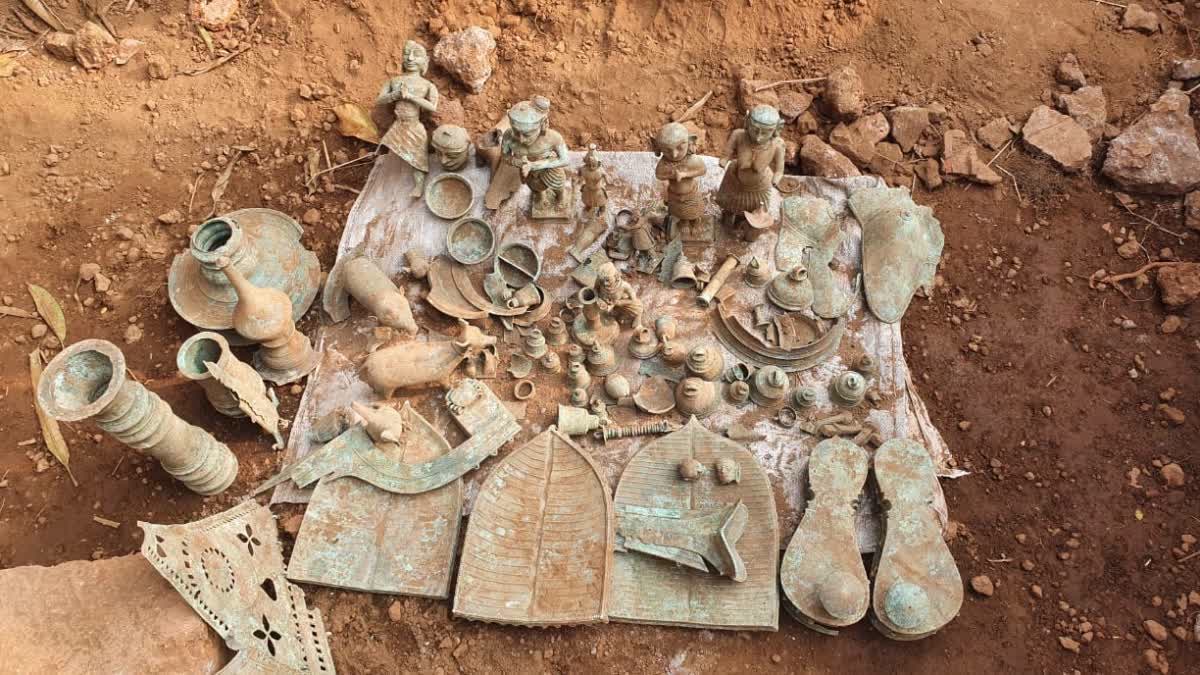Kasaragod: A recent excavation in Belur Village here for building construction has unearthed several hoary figurines and artefacts believed to be of the sixteenth and seventeenth centuries. The findings include a variety of figures crafted from alloy metals, shedding light on long-forgotten practices related to vows and ghost worship.
The items were found on the property of one Rathi Radhakrishnan, including animal figures such as a pig, deer, chicken, crab, goat, and snake. In addition, items associated with religious and ritualistic practices were also uncovered, including garlands, hairpins, a one-meter-high lamp, a sword, three figures of flag leaves, a trident, a hammer, and a mallet.
Historical Significance
According to Dr Nandakumar Koroth, a historical researcher and teacher at Nehru College, the discovered figures are part of a tradition of vows, which was prevalent in North Kerala during the sixteenth and seventeenth centuries. These artefacts also provide traces of ghost worship practices in the region. Koroth visited the site after being informed by Janamaithri beat officer TV Pramod, a postgraduate history student at Nehru Arts and Science College.
Renowned archaeologist Professor Ajit Kumar has suggested that some of the figures, particularly those in the Namaskara mudra (a gesture of greeting or prayer), could be linked to the art of the Ikkeri Nayakas, a historical dynasty in the region.
Future Research
Researchers have indicated that further studies will be conducted to explore the full significance of these findings. The discovery adds valuable insight into the region's rich cultural history and traditions, opening the doors for a deeper understanding of the spiritual and religious practices of the past.
Also Read:



